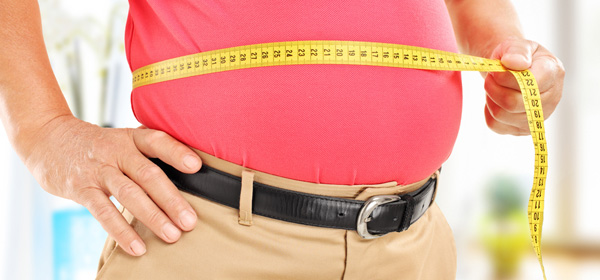Belly fat is more than just a superficial concern. It is also a significant risk factor for serious health problems such as diabetes and cardiovascular disease.
Fat around the midsection – known as abdominal obesity, central or visceral obesity – dramatically increases your risk of heart disease, type 2 diabetes and even some forms of cancer.
How do you know if this means you? Generally, if a man’s waist circumference measures more than 102cm, or a woman’s waist is more than 88cm, they are considered abdominally obese.
Abdominal fat contains two different types of fat – one is called subcutaneous fat, which is located just below the skin and is not considered so dangerous. While subcutaneous fat may not be so bad, if you have excessive stomach fat it will usually consist of visceral fat, which builds up around your internal organs and can cause organ malfunction.
Some people find that visceral fat makes the stomach feel hard, while subcutaneous fat tends to feel soft and squishy.
Visceral fat also produces a molecule called adipokine and other toxins that can increase your risk of coronary artery disease, gingivitis and other health issues.
As with all measures to lose weight there are two factors to consider, diet and exercise. Here are the ways you can target your belly fat.
Diet
Weight loss is about eating fewer calories than the body burns. This can help burn both visceral fat and excess subcutaneous fat.
Other dieting strategies to eliminate visceral fat include cutting out on sugary drinks and replacing them with water, if you are adding sugar to your coffee or tea, you should also stop doing that or consider an artificial sweetener.
Switching to wholegrain bread, rice and pasta will reduce the level of simple carbohydrates in your diet, which are quickly turned into fat. Eat more raw fruits and vegetables, increase your fibre intake and cut out saturated and trans fats.
Eating food high in fibre, such as lean meat, nuts and legumes can help you feel full, cutting out on cravings for sugary snacks.
Exercises
Exercise plays a significant role in eliminating belly fat, although it is impossible to target specific areas of the body for weight loss. Targeted exercises, such as crunches and sit-ups, will not get rid of abdominal fat, though they can help strengthen abdominal muscles.
Cardiovascular exercise gets the heart pumping. It also burns calories, helping to reduce belly fat, especially visceral fat. Start slowly, with walking or swimming. Then work up to more intense cardio, such as running or jumping rope.
Strength training can improve body weight, because muscles burn more calories than fat. Strength training can also help prevent osteoporosis and other chronic illnesses. Commit to strength training exercises, such as lifting weights or yoga, at least three times per week.
If you are on your bum a lot of the time, make sure you get up at least once per hour, walk around, do some stretches and get active.
Even when you are sitting down you can do some things to keep your body moving, such as tapping your feet, moving your legs up and down (with your feet on the floor) or doing leg lifts. Instead of taking the escalator or lift, take the stairs, and restrict your TV time and do some work around the house instead.
Are you concerned about your belly fat? What have you tried to trim down your waistline? Do you have any tips for our members?
Related articles:
Fat on the inside
Belly bulge worse than being obese
Can you get rid of a beer belly?

